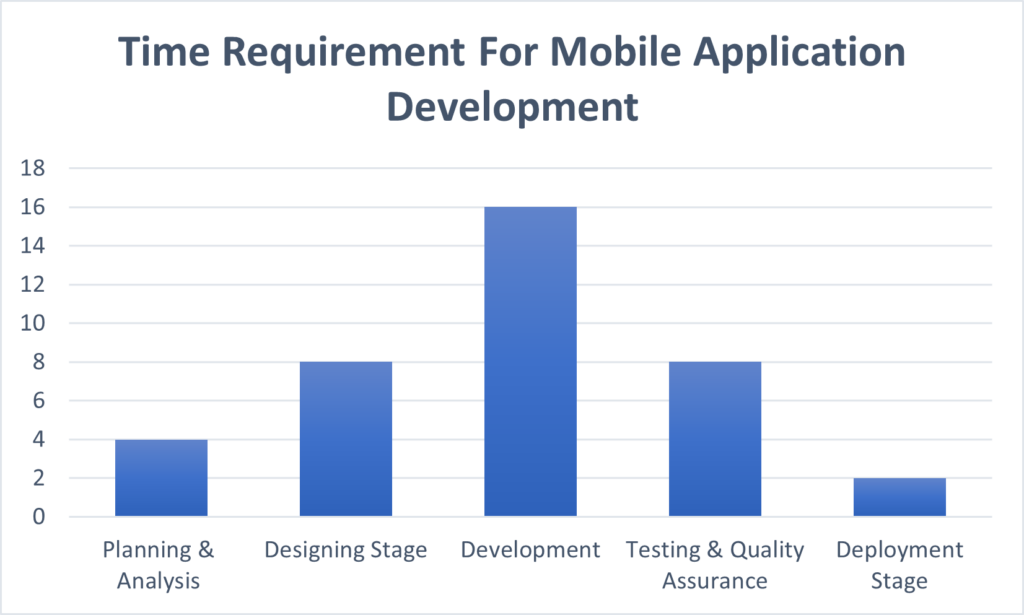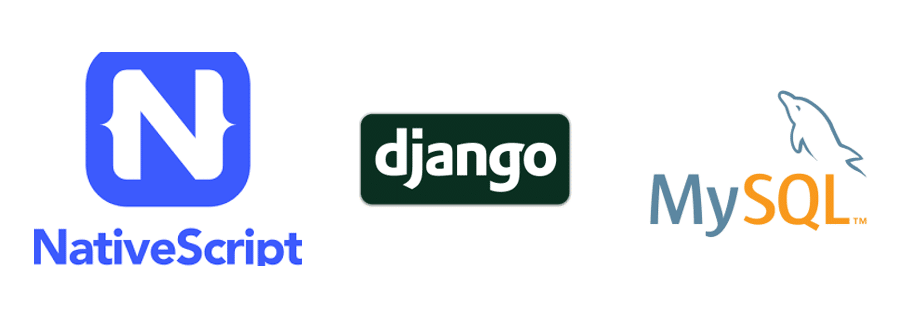How Long Does it Takes to Develop a Mobile Application?
Thanks to technology because it created ease of operations for businesses to connect with customers. In today’s world, mobile applications become a primary touchpoint for companies to increase their sales, digital presence and many more.
Now, companies are developing a competitive edge with the use of mobile applications by delivering user-friendly consumer experiences and more. Astonishingly, the market of mobile applications has also been experiencing robust revenue growth.
According to Grand View Research for 2022, the global mobile application market size is valued at $ 206.85 billion. It will grow at a CAGR of 13.8% from 2023 to 2030. These figures showcase the positive trend of the mobile application market growth.
On the other hand, the North America Mobile Application Market will also be experiencing massive growth. Forecasting data showcase that from 2023 to 2030, it will grow at a CAGR of 13.9%.
Size of the Application & Development Time
The development time of the application gets impacted due to the size of the mobile application. For example: an application with fewer features takes less time because it requires less API integrations, less designing functionalities and more. While a full fetch application can take more then 9 months for development.
Simple App Development – 2-4 months
Average App Development – 4-6 months
Complex App Development – starting from 9 months
Key Stages & Time Calculation For App Development Process
Mobile app development is a complex process that involves multiple stages. Each stage requires careful planning, execution, and testing to ensure that the app meets the user’s needs and works as expected. Here are the stages of mobile application development and what each stage entails.
Stage 1: Planning and Analysis (2-4 Weeks)
The first stage of mobile app development is planning and analysis. During this stage, the development team meets with the client to discuss the requirements and goals of the mobile app. They will create a project plan and finalize the scope of the app. The team will also assess the feasibility of the project and estimate the resources required. They will consider the target audience, the app’s features, and the platform(s) on which the app will be deployed.
Stage 2: Designing stage (4-8 Weeks)
Once the planning and analysis are complete, the design stage begins. During this stage, the design team creates the visual elements of the app, including the user interface (UI) and user experience (UX). They will create wireframes, prototypes, and mockups to finalize the design. The team will also consider the app’s branding and ensure that the design is consistent with the client’s brand guidelines.
Stage 3: Development (8-16 Weeks)
The development stage is where the real work begins. During this stage, the development team writes the code and builds the functionality of the app. They will follow an agile development methodology, which involves iterative development and testing to ensure that the app works as expected. The team will also ensure the app is optimized for performance and scalability.
Read More: 15 Benefits of Having a Mobile App for Business
Stage 4: Testing and Quality Assurance (4-8 Weeks)
Once the app is built, the testing and quality assurance stage begins. During this stage, the development team tests the app thoroughly to ensure that it works as expected. They will identify and fix bugs and ensure the app is compatible with different devices and platforms. The team will also perform security testing to ensure the app is secure and does not pose any risks to the user’s data.
Stage 5: Deployment (1-2 Weeks)
Once the app is tested and approved, it is ready for deployment. During the deployment stage, the team will submit the app to the app store (e.g., Apple App Store or Google Play Store) and ensure that it meets all the guidelines and requirements. The team will also ensure the app is optimized for search and discoverability.
App development timeline gets impacted if the team indulged lot of time into the deployment stage. Here, it is important to understand that there are five key points in the deployment process:
App Store Guidelines: Make sure to review and adhere to the guidelines and policies set by the various app stores, such as Apple’s App Store or Google Play Store. Failure to comply with these guidelines can result in the application being rejected or removed from the store.
Platform Compatibility: Ensure that the application is compatible with various mobile platforms, such as iOS or Android. This may involve modifying the application to support different screen sizes, resolutions, and operating system versions.
Security: Ensure that the application is secure and follows industry best practices for data privacy and protection. This can include implementing encryption, authentication, and other security measures.
Performance: Ensure that the application performs well under various conditions, such as low bandwidth or high user traffic. This may involve optimizing the application’s code, reducing network requests, and caching data.
User Experience: Ensure that the application provides a seamless and intuitive user experience. This can include conducting user testing, incorporating user feedback, and designing a user-friendly interface.
Stage 6: Maintenance (Ongoing)
The final stage of mobile app development is maintenance. This stage involves fixing any bugs, updating the app with new features, and ensuring that the app remains compatible with new devices and platforms. The team will also monitor the app’s performance and user feedback to identify areas for improvement.
Mobile application development is a complex process that requires careful planning, execution, and testing. Each stage is important and requires a different set of skills and expertise. The maintenance stage is an ongoing stage because bugs or errors can arised anytime so it requires consistent maintenance.
How long does it take to develop an app?

The above graph is a tabular representation of how long does it take to make an app in a graphical format. In this graph, the x-axis represents the stages involved in the development process while the y-axis represents the number of weeks.
Note: developing an app from scratch runs from planning & analysis to the maintenance stage. However, the time for maintenance is excluded from the above graph because it is an ongoing process while keep running through the cycle of a mobile application.
For reliable software maintenance and support services, you can connect to Amplework Software. We provide robust services to help you in gaining a key competitive advantage by providing a great user experience.
Read More: How to Outsource App Development in 2023 – Crucial Factors?
Strategies to Minimum the Application Development Time
The use of the below strategies will help you to reduce the application development time. Although, to use these strategies you need to connect with a mobile application development company that incorporates a huge experience in various dynamics:
Use Prototyping Tools: Using prototyping tools can help speed up the development process by allowing the development team to quickly create functional prototypes and user interfaces. This way, they can identify potential issues early in the development process and make necessary changes before they become major problems.
Automate Testing: Automating the testing process can help reduce development time significantly. Currently, the developers are shifting from manual testing of operations to automated testing.
Utilize Cross-Platform Development: Developing cross-platform applications can help minimize development time by allowing the development team to create a single application that can be deployed across multiple platforms. This eliminates the need to develop separate applications for each platform, which can save time and resources.
Leverage Existing Libraries and Frameworks: Utilizing existing libraries and frameworks can help speed up the development process significantly. These libraries and frameworks contain pre-built components and features that can be easily integrated into the application, saving development time and effort.
Use Agile Methodology: Adopting an agile methodology can help reduce development time by breaking down the development process into smaller, more manageable stages. This way, the development team can work more efficiently, identify issues early, and respond to change quickly.
Read about: How much does it cost to develop a food delivery app?
Appropriate Selection of Tools & Techniques
In 2023, there are an extensive number of IT frameworks, tools and specific techniques to enhance your IT operations. To reduce the average time to develop an app, you need to make sure of the proper alignment of the necessary front-end, back-end and database.
In order to use the below combination in your process, you can hire full stack developer from Amplework to use all these tech combinations into your process. Now, we’re presenting some of the best combinations for development:
I. React Native + Node.js + MongoDB:

MongoDB is a NoSQL database that stores data in a JSON-like format, making it ideal for use with Node.js and React Native applications. By using React Native with Node.js and MongoDB, developers can create powerful and scalable mobile applications with a responsive user interface and real-time data updates.
II. Ionic + Ruby on Rails + PostgreSQL:

Ionic is a popular framework for building cross-platform mobile applications using web technologies such as HTML, CSS, and JavaScript. By using Ionic with Ruby on Rails and PostgreSQL, developers can build high-quality mobile applications with a robust back-end system that can handle large amounts of data.
III. Flutter + Firebase + Cloud Firestore:

Flutter is an open-source framework used for building high-performance mobile applications for both iOS and Android platforms. Firebase is a Google platform that provides developers with a range of tools and services for building mobile applications. Cloud Firestore is a cloud-based NoSQL database that provides developers with real-time data synchronization and scalability. By using Flutter with Firebase and Cloud Firestore, developers can create high-quality mobile applications with real-time data updates and seamless integration with other Google services.
IV. Xamarin + .NET Core + SQL Server:

By using Xamarin with .NET Core and SQL Server, developers can build native mobile applications with a robust back-end system that can handle large amounts of data.
V. NativeScript + Django + MySQL:

NativeScript is an open-source framework used for building cross-platform mobile applications using web technologies such as HTML, CSS, and JavaScript. Django is a popular web application framework used for building web applications. MySQL is an open-source relational database management system that is known for its performance and scalability. By using NativeScript with Django and MySQL, developers can build high-quality mobile applications with a robust back-end system that can handle large amounts of data.
Conclusion
The development of an application involves several stages, including code compilation, testing, deployment to a staging environment, release and ongoing maintenance. Average time involvement can vary from 6 months to 1 year, as it is entirely dependent upon the size of the application.
If you’re looking for a reliable and experienced mobile app development company to help you with your project then Amplework is an excellent choice. We have a team of skilled developers and designers who offer end-to-end mobile app development services that are tailored to meet your unique needs.


 sales@amplework.com
sales@amplework.com
 (+91) 9636-962-228
(+91) 9636-962-228





